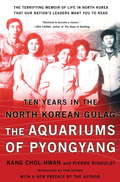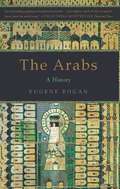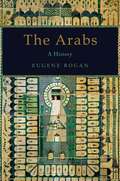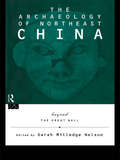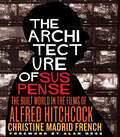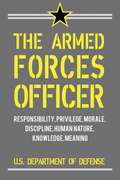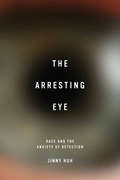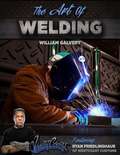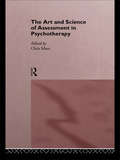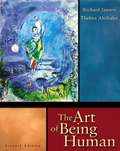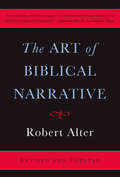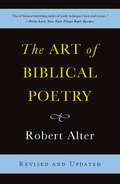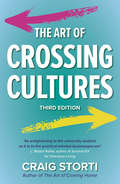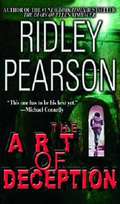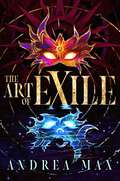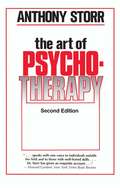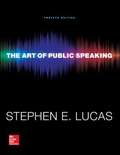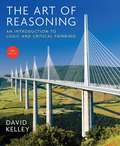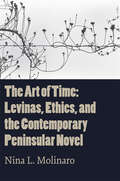- Table View
- List View
The Aquariums of Pyongyang: Ten Years in the North Korean Gulag
by Pierre Rigoulot Chol-Hwan KangNorth Korea is today one of the last bastions of hard-line Communism. Its leaders have kept a tight grasp on their one-party regime, quashing any nascent opposition movements and sending all suspected dissidents to its brutal concentration camps for "re-education." Kang Chol-hwan is the first survivor of one of these camps to escape and tell his story to the world, documenting the extreme conditions in these gulags and providing a personal insight into life in North Korea. Part horror story, part historical document, part memoir, part political tract, this record of one man's suffering gives eyewitness proof to an ongoing sorrowful chapter of modern history. New edition with a new preface by the author.
The Arabs
by Eugene RoganTo American observers, the Arab world often seems little more than a distant battleground characterized by religious zealotry and political chaos. Years of tone-deaf US policies have left the region powerless to control its own destiny-playing into a longstanding sense of shame and impotence for a once-mighty people. In this definitive account, preeminent historian Eugene Rogan traces five centuries of Arab history, from the Ottoman conquests through the British and French colonial periods and up to the present age of unipolar American hegemony. The Arab world is now more acutely aware than ever of its own vulnerability, and this sense of subjection carries with it vast geopolitical consequences.Drawing from Arab sources little known to Western readers, Rogan's The Arabs will transform our understanding of the past, present, and future of one of the world's most tumultuous regions.
The Arabs
by Eugene RoganTo American observers, the Arab world often seems little more than a distant battleground characterized by religious zealotry and political chaos. Years of tone-deaf US policies have left the region powerless to control its own destiny-playing into a longstanding sense of shame and impotence for a once-mighty people. In this definitive account, preeminent historian Eugene Rogan traces five centuries of Arab history, from the Ottoman conquests through the British and French colonial periods and up to the present age of unipolar American hegemony. The Arab world is now more acutely aware than ever of its own vulnerability, and this sense of subjection carries with it vast geopolitical consequences.Drawing from Arab sources little known to Western readers, Rogan's The Arabs will transform our understanding of the past, present, and future of one of the world's most tumultuous regions.
The Arabs
by Eugene RoganEste libro historico puede tener numerosos errores tipograficos y texto faltante. Los compradores pueden descargar una copia gratuita escaneada del libro original (sin errores tipograficos) desde la editorial. No indexado. No se muestra. 1828 edition. Extracto: . . . cria que tenga mala madre: si a la siguiente noche no se puede aun atar es preciso mamantar, pero sin cambiar la cria; esta operacion no deja de ser penosa y dificil. Las que se vayan quedando horras por arricion de sus crias se han de dejar quietas con las prenadas, porque si se llevan a las chicadas todo lo descomponen, correteando en pos de unas y de otras. El corral de las prenadas no conviene que sea muy laderoso, para que las madres pierdan menos crias. Si hubiese atajo ya cortado es necesario acudir a ayudar al Companero para cerrarlo, y si el temporal continuase, sacar el ganado a comer la mas inmediato que ser pueda a las redes, y cerrarlo temprano. Toda cria que salga viva y tenga madre se ha de conservar, sea buena o mala, y colocarla en corral separado y abrigado. En la mutacion de tiempo cesa precisamente el ahijeo; pero el Rabadan debe vigilar incesantemente las atonadas, la chicada de reserva, las recentinas &c. , repasando la distribucion que tiene hecha de madres y madrastras para no cambiarlas el primer dia que las ate. En todas estas maniobras es necesario que le ayuden los demas Pastores, porque si no se fatigara mucho sin lograr el fin. Supongamos que el temporal dura tres o cuatro dias, al cabo de los cuales resultan ciento o ciento y cincuenta horras en este caso la primera noche que se pueda atar se cierra ti con tiempo las atonas, y al pie de cada corral se hincan las estacas necesarias: hecho esto se dejan sosegar por un rato, y en el interin el Rabadan, ayudado por los demas, deschica los pares, los que estan seguros los deja comer, y los dudosos los pone en corral separado, y al pie se hincan estacas: . . .
The Arabs
by Eugene RoganTo American observers, the Arab world often seems little more than a distant battleground characterized by religious zealotry and political chaos. Years of tone-deaf US policies have left the region powerless to control its own destiny-playing into a longstanding sense of shame and impotence for a once-mighty people. In this definitive account, preeminent historian Eugene Rogan traces five centuries of Arab history, from the Ottoman conquests through the British and French colonial periods and up to the present age of unipolar American hegemony. The Arab world is now more acutely aware than ever of its own vulnerability, and this sense of subjection carries with it vast geopolitical consequences. Drawing from Arab sources little known to Western readers, Rogan’sThe Arabswill transform our understanding of the past, present, and future of one of the world’s most tumultuous regions.
The Arabs: A History
by Eugene RoganThis excellent history of the Middle East, a paperbound reprint of the 2009 edition, provides readers with a compelling narrative that explains the current state of the wider Arab world through an exploration of the major periods in its recent history. Divided chronologically, the work examines the period of Ottoman rule from 1516 to the early 1800s, the era of European colonization, the Cold War era, and the ongoing period of U. S. intervention. Drawing on primary source material, the work discusses the continuity of Arab culture in relation to dominating external powers and provides a cogent analysis of the current political and religious conflicts gripping the nations of the Arab world. The work includes a collection of color plates. Rogan is a professor of Middle East studies at St. Anthony's College, Oxford. Annotation ©2012 Book News, Inc. , Portland, OR (booknews. com)
The Archaeology of Northeast China: Beyond the Great Wall
by Sarah Milledge NelsonAn up-to-date synthesis of the archaeology and prehistory of the region called Dongbei by the Chinese, but known in the west as Manchuria. Based on recent archaeological discoveries, the book presents evidence to show that far from being a backwater palely reflecting the glories of central China, Manchuria in prehistory had both its own developmental trajectory, parallel to but different from that of China, and contributed to the formation of the characteristics of what came to be Chinese. New information on the Northeast region of China indicates that it was not populated exclusively by nomadic peoples, but that some of the earliest farming sites can be found here. The Hongshan culture with its Goddess Temple and female figurines is unique, with spectacular and unprecedented jade carving. Lower Xiajiadian culture has painted pottery that can be seen to be the forerunner to the magnificent Shang bronzes.
The Architecture of Suspense: The Built World in the Films of Alfred Hitchcock (Midcentury)
by Christine Madrid FrenchThe inimitable, haunting films of Alfred Hitchcock took place in settings, both exterior and interior, that deeply impacted our experiences of his most unforgettable works. From the enclosed spaces of Rope and Rear Window to the wide-open expanses of North by Northwest, the physical worlds inhabited by desperate characters are a crucial element in our perception of the Hitchcockian universe. As Christine Madrid French reveals in this original and indispensable book, Hitchcock’s relation to the built world was informed by an intense engagement with location and architectural form—in an era marked by modernism’s advance—fueled by some of the most creative midcentury designers in film.Hitchcock saw elements of the built world not just as scenic devices but as interactive areas to frame narrative exchanges. In his films, building forms also serve a sentient purpose—to capture and convey feelings, sensations, and moments that generate an emotive response from the viewer. Visualizing the contemporary built landscape allowed the director to illuminate Americans’ everyday experiences as well as their own uncertain relationship with their environment and with each other.French shares several untold stories, such as the real-life suicide outside the Hotel Empire in Vertigo (which foreshadowed uncannily that film’s tragic finale), and takes us to the actual buildings that served as the inspiration for Psycho’s infamous Bates Motel. Her analysis of North by Northwest uncovers the Frank Lloyd Wright underpinnings for Robert Boyle’s design of the modernist house from the film’s celebrated Mount Rushmore sequence and ingeniously establishes the Vandamm House as the prototype of the cinematic trope of the villain’s lair. She also shows how the widespread unemployment of the 1930s resulted in a surge of gifted architects transplanting their careers into the film industry. These practitioners created sets that drew from contemporary design schools of thought and referenced real structures, both modern and historic. The Architecture of Suspense is the first book to document how these great architectural minds found expression in Hitchcock’s films and how the director used their talents and his own unique vision to create an enduring and evocative cinematic world.Publication of this volume was assisted by a grant from Furthermore: a program of the J. M. Kaplan Fund
The Armed Forces Officer: Essays on Leadership, Command, Oath, and Service Identity
by Richard Swain Albert PierceThis newest edition of the classic guide for military officers is a necessity given the volatility of our current political climate.The Armed Forces Officer is much more than a how-to guide for military officers. It is a series of candid, timeless essays on the nature of the people who occupy the ranks of the military services. <P><P>This invaluable resource for all those involved in the military highlights that our military is not just a collection of machines, processes, and regulations, but a very human endeavor whose proper understanding requires acknowledging that humans are what make our military the complex, potent, and wonderful organization that it is—a truth that can be applied to any organization, military or civilian, composed of people and all their mysterious complexities. <P><P>This is an updated and rewritten edition of the 1950 classic, The Armed Forces Officer. This edition includes a foreword by General Joseph F. Dunford, Jr., the chairman of the Joint Chiefs of Staff.
The Arresting Eye: Race and the Anxiety of Detection (Cultural Frames, Framing Culture)
by Jinny HuhIn her reading of detective fiction and passing narratives from the end of the nineteenth century forward, Jinny Huh investigates anxieties about race and detection. Adopting an interdisciplinary and comparative approach, she examines the racial formations of African Americans and Asian Americans not only in detective fiction (from Sherlock Holmes and Charlie Chan to the works of Pauline Hopkins) but also in narratives centered on detection itself (such as Winnifred Eaton's rhetoric of undetection in her Japanese romances). In explicating the literary depictions of race-detection anxiety, Huh demonstrates how cultural, legal, and scientific discourses across diverse racial groups were also struggling with demands for racial decipherability. Anxieties of detection and undetection, she concludes, are not mutually exclusive but mutually dependent on each other's construction and formation in American history and culture.
The Art Of Welding
by William L. Galvery Ryan FriedlinghausRyan Friedlinghaus, the celebrated guru of automotive customization and host of West Coast Customs on Fox Sports, adds practical knowledge to William Galvery's acclaimed welding insight and everyday tips and tricks developed over his long professional career as an educator. This unique and original book improves upon the shortcomings of competitive titles by providing complete, in-depth coverage of the equipment and techniques used in the most popular welding processes: oxyacetylene, stick welding, MIG welding and TIG welding. What's more, it presents information in a lively, easy-to-follow design. Each chapter contains the pros and cons of each process and information on equipment, setup, materials, safety and welding techniques. To provide a solid footing for the novice welder, there is a chapter that provides an overview of welding and another on tools and materials. The bulk of the book is devoted to the more popular welding techniques. The authors also provide a chapter on soldering and brazing and another on plasma cutting. The Art of Welding is perfect for anyone who wants to learn welding, to make repairs or as part of a hobby. Even experienced welders will discover many tips and procedures to improve their welding technique. Features: Presents the accumulated experience and knowledge of two welding professionals. William Galvery provides insight to the proper use of equipment and the science behind welding, including how welding affects different metals. Ryan Friedlinghaus provides the tips and techniques he uses everyday at West Coast Customs. Offers in-depth information about all popular welding processes, step-by-step photos and an engaging design that will appeal to do-it-yourselfers and hobbyist who want a solid background in welding. Emphasis is placed on safety with sections on selecting the proper clothing and safety lens for welding. Each welding process includes tips on approaching the job in a safe manner. Contains troubleshooting guides offering users an opportunity to learn from their mistakes by comparing inadequate welds to the troubleshooting guides located throughout the book. A chapter on welding projects shows welders how to compensate for the natural distortion that welding causes to various metals
The Art and Science of Assessment in Psychotherapy
by Chris MaceWhile professional trainings in psychotherapy and counselling vary considerably in the attention they pay to assessment, courses, conferences and workshops devoted to the subject are attracting an audience eager for more demonstration and discussion. In response, The Art and Science of Assessment in Psychotherapy offers an extended symposium on principles and practice. Guided by a belief that comparative study will spur critical reflection and innovation, its presentations encompass a wide range of therapeutic orientations, settings and interests. In the book twelve distinguished practitioners of widely used approaches within psychotherapy describe the methods they use in their assessments and how these have developed. They also discuss the uses and limitations of the therapies they offer. The approaches covered include psychoanalytic psychotherapy, in-patient psychotherapy, family therapy, group psychotherapy, psychodrama, cognitive-behaviour therapy, couple therapy and focal therapy. Additional chapters look at assessment in the light of psychotherapy research, question how far assessment can be separated from treatment, and ask whether the use of questionnaires and special tests aids or detracts from interviewing as a method of assessment. As psychotherapy matures as a profession, both chronologically and in response to public demand, interest in assessment methods is growing, yet to date the published material has been limited and dispersed amongst specialist books and journals. The Art and Science of Assessment in Psychotherapy offer the first comprehensive, practical review of a key professional issue which will be of interest to all practising psychotherapists and counsellors.
The Art of Being Human (Seventh Edition)
by Thelma Altshuler Richard JanaroThe Art of Being Human introduces readers to the ways in which the humanities can broaden their perspective, enhance their ability to think critically and creatively, and enrich their lives. This highly-respected book has been lauded for its scope of topics, accessibility, and lucid writing style. Chapter topics include myth, literature, art, music, television, cinema, and the theater. Also discussed are provocative issues in the humanities - religion, morality, happiness, death, freedom, and controversies in the arts. The thematic organization of the book allows readers to concentrate on one artistic mode at a time
The Art of Biblical Narrative
by Robert AlterSince it was first published nearly three decades ago,The Art of Biblical Narrativehas radically expanded the horizons of biblical scholarship by recasting the Bible as a work of literary art deserving studied criticism. Renowned critic and translator Robert Alter presents the Hebrew Bible as a cohesive literary work, one whose many authors used innovative devices such as parallelism, contrastive dialogue, and narrative tempo to tell one of the most revolutionary stories of human history: the revelation of a single god.
The Art of Biblical Poetry
by Robert AlterThree decades ago, renowned literary expert Robert Alter radically expanded the horizons of biblical scholarship by recasting the Bible as not only a human creation but a work of literary art deserving studied criticism. InThe Art of Biblical Poetry, his companion to the seminalThe Art of Biblical Narrative, Alter takes his analysis beyond narrative craft to investigate the use of Hebrew poetry in the Bible. Updated with a new preface, myriad revisions, and passages from Alter’s own critically acclaimed biblical translations,The Art of Biblical Poetryis an indispensable tool for understanding the Bible and its poetry.
The Art of Community: Seven Principles for Belonging
by Charles H. VoglThis practical leadership guide offers seven timeless principles for building a supportive and inclusive community with a strong sense of purpose.Many people think of “community” as something that happens by accident or emerges naturally over time. But in The Art of Community, Charles Vogl shows that there are specific principles that leaders can use to create or strengthen communities. Drawing on three thousand years of tradition, Vogl lays out the seven enduring principles that every community of every kind—whether formal or informal—must master to be effective.Vogl describes the purpose of each principle and offers extensive hands-on tools for implementing them. He also shares ways to help communities remain healthy and life-affirming by avoiding toxic rigidity and exclusivity.
The Art of Crossing Cultures, 3rd Edition
by Craig StortiFrom the author of Why Travel Matters, the third edition of the essential book to bridge cultures and countries.Adjusting to a new culture and getting along with the local people challenge everyone who lives and works abroad. Whether in business, diplomacy, education, or as a long-term visitor abroad, anyone can be blind-sided by a lack of international knowledge and experience and be caught at a disadvantage.In this completely revised and expanded edition of the classic The Art of Crossing Cultures, Craig Storti shows what it takes to encounter a new culture head-on and succeed. This one-of-a-kind guidebook to bridging the cultural divide - with more than 50,000 copies sold worldwide - incorporates a stellar sampling of the writings of some of the world's greatest writers, poets and observers of the human condition.Through the vivid perceptions and words of such literary legends as Noel Coward, Graham Greene, Rudyard Kipling, E. M. Forster, Mark Twain, Evelyn Waugh, and others, Storti paints an intimate portrait of the personal challenges of adjusting to another culture: anticipating differences, managing the temptation to withdraw, and gradually adjusting expectations of behavior to fit reality.This timely new edition focuses special attention on how to deal with country and culture shock and includes many new examples of cross-cultural misunderstandings - particularly in business. Storti breaks new ground with his easy-to-understand model of cultural adjustment and tips on how to master the process and develop adaptive strategies - the heart of the cross-cultural experience.
The Art of Deception (Lou Boldt/daphne Matthews Ser. #8)
by Ridley PearsonSeattle police psychologist Daphne Mathews has her hands full with a pregnant, addicted, runaway teenager, a murder victim's brother whose strange behavior unnerves her, and a deputy sheriff she once treated who's now stalking her. She's frightened enough to move in with Detective John LaMoia, a development that doesn't exactly thrill Lou Boldt, their boss and Daphne'sex-lover. But Lou's too busy with his own cases to brood over John and Daphne: the recent disappearances of two local women, and the death of Billy Chen, the nephew of Mama Lu, an old friend and a powerful figure in Seattle's Chinese community, which appeared to be an accident but turns out to have been murder.The only thing the disappearances and murder have in common is location; all three victims were last seen in a part of downtown built over the Underground, a dark and dangerous warren of buildings abandoned after the fire that leveled Seattle more than a hundred years ago.While Seattle's Underground has been the setting for several mysteries by other authors (Earl Emerson, J.A. Jance), Pearson makes the most of its creepy-crawly atmosphere in a gripping thriller whose solid plotting pulls all of Daphne's, LaMoia's, and Boldt's cases together. It also wisely reconfigures the personal relationships among the three central characters, which bodes well for their future adventures in this long-running series (Middle ofNowhere, The Pied Piper). --Jane Adams
The Art of Exile
by Andrea MaxLegendborn meets The Da Vinci Code in this captivating light academia contemporary fantasy following a teen who infiltrates a secret school for the descendants of exiled Renaissance masters to steal their long-lost arts and sciences.Unlike the high-achieving members of her family&’s secret society, Ada Castle has mastered nothing but the art of falling for the wrong guys. But now she finally has the chance to prove her worth: she just needs to gain access to a hidden school that her family has been trying to locate for generations. Granted, she accidentally goes on a date with the recruiter first, then is temporarily abducted, but Ada manages to secure herself an invitation to the Genesis Institute, where descendants of exiled Renaissance masters practice long-lost arts and sciences. The school is a utopia of sustainable technology, medical advancements, and myths come to life, yet they are unjustly hoarding their resources. Ada goes undercover to steal their innovations for the rest of the world, but Genesis nurtures her creativity and challenges her views, and she can&’t help but fall for the school…and maybe also for her frustratingly off-limits recruiter-turned-mentor. Ada&’s tangle of lies starts to unravel when one of her new friends goes missing. To rescue her, Ada is forced to work with a dangerous (and dangerously hot) classmate whose suspicions threaten her cover. And when the information she&’s shared with her family puts her missing friend and all of Genesis in peril, she&’ll have to choose whom to betray: the family she loves or the school that has helped her find herself.
The Art of Monetary Policy
by David C. Colander Dewey DaaneOffering an introduction to the Japanese political system, this book covers the end of the Koizumi era, the brief and troubled premiership of Abe, and the selection of Fukuda as prime minister. It includes material on "bubble" and "post-bubble" economic developments, as well as coverage of health care policy.
The Art of Psychotherapy
by Anthony StorrAnthony Storr's accessible and humane account of the art of psychotherapy has been widely read by practitioners in training and others in the helping professions, as well as many general readers. The second edition includes a thoroughly revised account of the obsessional personality, and a new chapter that draws on the author's recent work on the importance of the processes of healing that take place within the isolated individual.
The Art of Public Speaking 12th Edition
by Stephen LucasThe Art of Public Speaking personalizes learning for every student no matter who they are or where they are, ensuring that they come to your public speaking class confident, prepared with the principle foundations, and ready to participate in your teaching and coaching. Connect is the only integrated learning system that empowers students by continuously adapting to deliver precisely what they need, when they need it, and how they need it, so that your class time is more engaging and effective.
The Art of Reasoning: An Introduction to Logic and Critical Thinking (Fourth Edition)
by David KelleyDesigned for courses in introductory logic or critical thinking. In addition to the elements of formal deductive logic, it includes classification and definition, basic argument analysis, fallacies, and inductive reasoning.
The Art of Shakespeare's Sonnets
by Helen VendlerThis book critically analyses Shakespeare's sonnets quoting some of his poetic beauties.
The Art of Time: Levinas, Ethics, and the Contemporary Peninsular Novel
by Nina L MolinaroEthics, or the systematized set of inquiries and responses to the question “what should I do?” has infused the history of human narrative for more than two centuries. One of the foremost theorists of ethics during the twentieth century, Emmanuel Levinas (1906-1995) radicalized the discipline of philosophy by arguing that “the ethical” is the foundational moment for human subjectivity, and that human subjectivity underlies all of Western philosophy. Levinas’s voice is crucial to the resurging global attention to ethics because he grapples with the quintessential problem of alterity or “otherness,” which he conceptualizes as the articulation of, and prior responsibility to, difference in relation to the competing movement toward sameness. Academicians and journalists in Spain and abroad have recently fastened on an emerging cluster of peninsular writers who, they argue, pertain to a discernible literary generation, provisionally referred to as Generación X. These writers are distinct from their predecessors; they and their literary texts are closely related to the specific socio-political and historical circumstances in Spain; and their novels relate stories of more and less proximity, more and less responsibility, and more and less temporality. In short, they trace the temporal movement of alterity through narrative. Published by Bucknell University Press. Distributed worldwide by Rutgers University Press.
